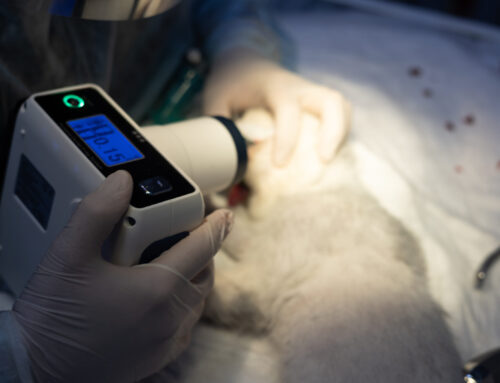It’s a day like any other day, except that your once cream-colored cat has taken on a brownish tone. Don’t panic, just yet. Skin and hair color is determined by melanocyte cells in the skin and hair follicles. Those cells produce melanin which in turn produces the color. Remember what you looked like last summer; after a day at the shore? When your skin is exposed to the sun, those cells are stimulated to produce more melanin. But what can cause color changes in your cat?
Genetics
Cats come in a kaleidoscope of colors; or lack pigment altogether in the case of albinos. In fact, did you know that the coloration patterns in “pointed” breeds of cats (Siamese, Ragdoll, Balinese, etc.) are temperature dependent? The production of the pigment is dependent on the action of a particular enzyme and the action of that enzyme is temperature dependent. That’s why the warmer parts of a Siamese cat’s body are lighter in color while the cooler parts (like the face, feet, tail and ear tips) are more darkly pigmented. The scientific name is Wilson’s Syndrome, according to technology.org.
Environment
Given the temperature dependent color of pointed breeds, they are especially prone to color changes associated with temperature variations that stretch out over time. Move to Arizona and you’ll likely see the points turn lighter. And be prepared for coat color changes if your animal is shaved for surgery. The first hair re-growth, on less insulated skin will likely be darker; subsequent hair growth should return your pet to the original color. (Medical, Genetic & Behavioral Risk Factors of Siamese Cats by Ross D. Clark DVM)
Black cats often turn a reddish color when exposed to the sun. If you fear it’s something more, have your vet run tests to determine if their diet is deficient in amino acids or something else. Diet deficiencies are easily reversed with the right food balance.
Diseases
Vitiligo is a hereditary disorder in cats that causes white areas to appear as the cat matures. These spots typically occur around the nose and eyes, but are not cause for alarm. Color changes have been reported in cats post-stressful situations (pregnancy, serious illness). For more information related to diseases in cats, see peteducation.com
As a rule, pigment changes in your cat are most likely due to benign conditions that do not cause serious consequences to your cat’s overall health. However, underlying illness or poor nutrition needs to be addressed. Your veterinarian will ask you questions as part of your cat’s evaluation. Diagnostic tests may be necessary and, should the problem be more than benign, the owner and the doctor should respond appropriately.
If you have any questions or concerns, you should always contact your veterinarian — she or he is your best defense to ensure the health of your pet.
The content is not medical advise, nor is it intended to be a substitute for veterinary treatment or care. First, consult with your veterinarian before use.






